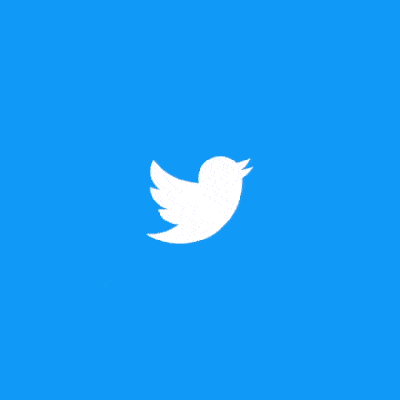
This week’s ‘Skim: WhatsApp officially unveils business account features, hints at standalone app for brands; Facebook redefines how it calculates organic reach (what that means for your business); how Instagram just reinvented the hashtag; Twitter just made tweetstorms official with reveal of “threads,” calls expanded character limit a huge win for engagement; what to expect of Pinterest’s soon-to-come self-serve analytics tool; and much more…
Skim to catch up on this week’s big news!
1. WhatsApp officially unveils business account features
The Facebook-owned messaging platform details the differences between verified and confirmed business accounts in a new FAQ on its website, and officially mentions WhatsApp Business, its standalone mobile app for brands with business accounts to manage communications with consumers on the platform.
WhatsApp Business, now in private testing with a small group of users, will enable companies to create a business profile and set up auto-replies, and it will have an option for chat migration, along with analytics so businesses can better understand their and their consumers’ usage of the platform.
2. Facebook is changing how it calculates organic reach. Here’s what it means for you.
The organic reach figures you see on Facebook refer to the number of times your post was included within the feed of a user, whether the post appeared on the user’s screen or not. More than a year after promising change, the social network is set to redefine organic reach to signify viewable impressions. That means you will have “reached” someone only when your post actually appeared on that person’s screen.
Since it sounds logical, some might be surprised that this isn’t already the case, but Facebook’s update has been in the works since November 2016. Brands could expect a near 20% drop in organic reach once the change takes place in early 2018. Keep your eyes on this one!
3. Instagram creates a new way to engage with hashtags
Instagram took the hashtag to new heights this week by introducing a way for users to follow hashtags, just as they’d follow Instagram accounts. You can now subscribe to a hashtag and get updates on posts tagged with that hashtag.
The change makes Instagram a more hybrid social platform that enables users to follow interests or topics rather than just other users. Down the road, brands will likely be able to get more detailed insight into what topics are hot on the mind of consumers, since users can see what hashtags other users follow.
The social network will also let users mark posts as “prominent” or not so that the platform learns what types of posts users prefer not to see.
4. Twitter calls its extended character limit a win for engagement
It turns out letting users craft longer tweets significantly increased engagement on the platform. Twitter raised its limit from 140 characters to 280 characters last month, and the average rate of retweets and likes have spiked as a result.
According to SocialFlow findings, the average rates of retweets and likes for 140-character tweets were 13.71 and 26.52, respectively, but those figures shot up to 29.96 and 50.28, respectively, for tweets longer than 140 characters.
Have you seen had engagement as a result of more lengthy storytelling capabilities on the platform? Sound off in the comments below!
5. Facebook’s newest ad unit will let brands have conversations with consumers on WhatsApp
WhatsApp has repeatedly said it won’t put ads in users’ feeds, but that apparently won’t stop parent Facebook from finding ways to monetize the platform. The social network this week introduced a new ad unit that lets users message brands directly on WhatsApp from Facebook.
The new type of call to action, for now set to roll out in North and South America, Africa, and Australia, opens a door for brands looking to expand their social media marketing presence into messaging platforms.
Europe might come later, but Facebook will have to fight through the data protection laws that have already blocked the platform from sharing data between its flagship app and WhatsApp.
6. LinkedIn’s being used by the Chinese to recruit German informants
It turns out LinkedIn can also be a great place to land a job as an informant for the Chinese government. Germany this week uncovered that Chinese Intelligence targeted over 10,000 Germans with communications from fake LinkedIn accounts, particularly in the hopes of reaching top-level German officials in parliament, ministries, and government agencies.
Like their American intelligence colleagues, German officials have noted increasingly intense cases of cyber-espionage from foreign governments in recent years, and interference on social media has been linked to attempts to change the outcome of elections across the globe.
For now, though, keep an eye out for LinkedIn users “Allen Liu” and “Lily Wu”.
7. Twitter unleashes the storm with tweetstorms
It’s been a long time coming, but Twitter has officially unveiled “threads”, a simple way to link a series of connected tweets commonly known to users as tweetstorms.
Tweetstorms have been a way for those on the social network to get around the platform’s sometime constraining character limit. Even though Twitter increased the character limit to 280, threads will let users post up to 25 entries, meaning longer stories of breaking news and political debates just became more readable, and probably more prevalent.
Check out this GIF to see how it’s used:

8. Pinterest to release a self-service analytics tool for brands in 2018
Does your social media team use Pinterest to communicate with customers? If so, the digital pinboarding social network has some welcome news for you. It’s set to unveil an insights tool early next year, providing brands much-needed data about their Pinterest audiences.
Powered by Pinterest’s Taste Graph, which lets brands target users against a set of over 5,000 interests, the insights tool is expected to show an audience’s top categories and interests, all the way down to specific interests, such as kitchens and farmhouses.
Brands can sign up here to get access to the new tool when it launches.
9. Here’s how to create an Instagram content plan for service-based businesses
It isn’t always evident how a brand that sells services rather than products can spice up its content on image-centric social media platforms like Instagram. But carefully crafting your content mix to address your audience’s needs, provide value, and promote your service, can be an easy way to address the problem of not having a physical product to show off. And Social Media Examiner has the answer, with tons of great free tools and tips to strengthen your Instagram results.
Covered in detail: outlining your content mix, planning posts that provide value and connect with your audience, composing captions that convert, and more.
10. A former Facebook exec shares a sobering take on social media and society
Facebook’s former vice-president for user growth minced no words when speaking to an audience at Stanford’s Graduate School of Business when he admitted feeling “tremendous guilt” about the social network he helped build. Why? Because it is ripping apart the fabric of how society works, he said.
Chamath Palihapitiya did say Facebook overwhelmingly does good in the world, but his harsh take targeted a wider online environment and the venture capitalists who fund it, citing an instance that hoax messages about kidnappings on WhatsApp led to the lynching of seven innocent people in India.
The former Facebook exec urged us to reflect on how we use social media to do good in the world, and tackle true challenges, such as climate change and disease. Facebook’s and the others’ maximizing the good and minimizing the bad might just be their only answer to survival.
11. We’ll wrap with a boy’s cry to the world that united, and then divided, social media
Social media heeded anew a call to stop bullying this week when a video of young Tennessee student Keaton Jones surfaced in which he pleas emotionally to understand the actions of his bullies. The clip, posted online by his mother, went viral in a global fashion, with celebrities, talk show hosts, and everyone in between responding with messages of support. Actor Chris Evans even invited Keaton and his mother to the 2018 premiere of The Avengers in Los Angeles.
Why the division, then? Unverified photos of Keaton’s mother’s purported posts supporting the confederate flag elicited cries of racism from some social media users, with celebrities and others defending the child from the actions of his mother. Fake fundraisers appeared on GoFundMel, with one raising over $58,000 before being suspended because the organizer had no connection to the family.
Social media can be an enormous source of strength for users in need, but it comes with its fair share of abuse and greed. Users (and brands) take note. Again.
Join over 600,000 marketing professionals, and gain access to thousands of marketing resources! Don’t worry … it’s FREE!
